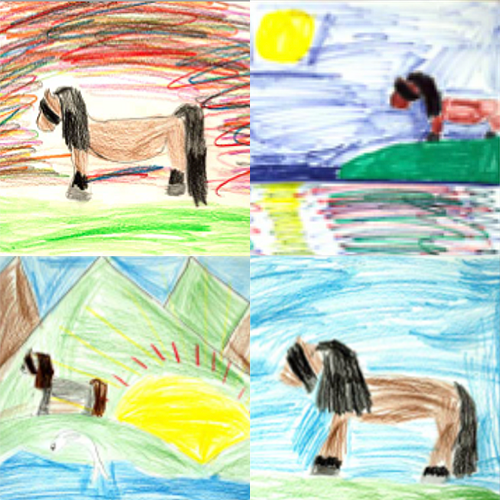Modelling as a fundament for creativity
DOI:
https://doi.org/10.7577/formakademisk.2673Abstract
The overall setting around this investigation is the writing of a PhD thesis ‘To see the visually controlled’ (Frisch, 2010), where my aim was to document, describe, analyse, compare and theorise formal (teacher-initiated) and informal (children-initiated) visually controlled drawings, also called modelling drawing processes, among 9–12-year-olds. The modernist narrative in art education presented by Wilson (2004) claims that modelling in drawing among children is uncreative. My investigation shows how creative processes can be detected by using Vygotsky’s creativity theory and Kaufmann and Beghetto’s (2009) 4c creativity model within a sociocultural theoretical tradition. The acts of creative processes done by moving modelled elements in a drawing around has not been thoroughly seen as a central strategy in children´s drawing processes. This article is an attempt to shed light on these processes often found when looking at children’s informal drawing processes. The importance of these ‘shifting-around’ processes are not always regarded as valuable and related to both modelling and creativity. The relation between modelling in drawing and creativity as part of children´s drawing learning is explored in this article.

Downloads
Published
How to Cite
Issue
Section
License
Authors who publish with this journal agree to the following terms:
- Authors retain copyright and grant the journal right of first publication with the work simultaneously licensed under a Creative Commons Attribution 4.0 License that allows others to share the work with an acknowledgement of the work's authorship and initial publication in this journal.
- Authors are able to enter into separate, additional contractual arrangements for the non-exclusive distribution of the journal's published version of the work (e.g., post it to an institutional repository or publish it in a book), with an acknowledgement of its initial publication in this journal.
- Authors are permitted and encouraged to post their work online (e.g., in institutional repositories or on their website) prior to and during the submission process, as it can lead to productive exchanges, as well as earlier and greater citation of published work (See The Effect of Open Access).
- The author(s) must manage their economic reproduction rights to any third party.
- The journal makes no financial or other compensation for submissions, unless a separate agreement regarding this matter has been made with the author(s).
- The journal is obliged to archive the manuscript (including metadata) in its originally published digital form for at least a suitable amount of time in which the manuscript can be accessed via a long-term archive for digital material, such as in the Norwegian universities’ institutional archives within the framework of the NORA partnership.
The material will be published OpenAccess with a Creative Commons 4.0 License which allows anyone to read, share and adapt the content, even commercially under the licence terms:
This work needs to be appropriately attributed/credited, a link must be provided to the CC-BY 4.0 licence, and changes made need to be indicated in a reasonable manner, but not in any way that suggests that the licensor endorses you or your use.



